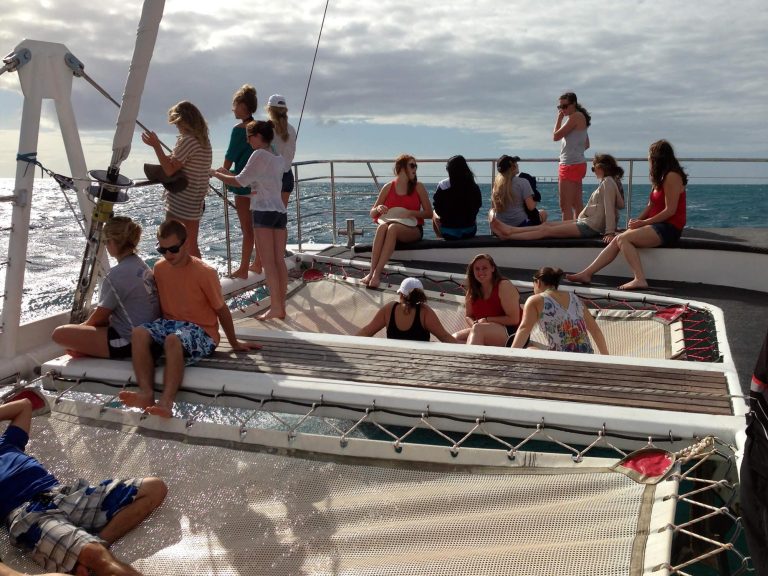A new report ranks the best destinations for cross-cultural encounters, spotlighting places where visitors can connect meaningfully with local communities rather than just pass through. Assessing factors such as cultural diversity, accessibility, safety, event calendars, and the availability of community-led experiences, the study highlights standouts across regions-from multicultural capitals to border towns and festival hubs.
The findings arrive amid growing demand for immersive, responsible travel and mounting pressure on destinations grappling with overtourism. Analysts say top performers balance openness and authenticity with safeguards for residents, including small-group programs, codes of conduct, and transparent reinvestment of tourism revenue. The report is poised to guide travelers, policymakers, and industry leaders seeking to foster richer exchanges while protecting local culture.
Table of Contents
- Report identifies Tokyo Istanbul Mexico City and Tbilisi as leading destinations for cross cultural immersion
- How the rankings were built homestays language exchanges festival calendars and visa openness
- Field guide for travelers neighborhoods programs and etiquette to foster meaningful connections
- Closing Remarks
Report identifies Tokyo Istanbul Mexico City and Tbilisi as leading destinations for cross cultural immersion
A new analysis spotlights four urban powerhouses where everyday life functions as a classroom: Tokyo pairs ritual-heavy etiquette with seamless tech-driven public life; Istanbul layers Ottoman-era heritage over contemporary arts along the Bosphorus; Mexico City blends Indigenous lineages with a booming creative scene across markets and museums; and Tbilisi merges Caucasian, Persian, and Soviet legacies through courtyard sociability and a rising startup culture. Researchers cite resilient neighborhood networks, accessible food-and-arts ecosystems, and expanding homestay and volunteer pathways as the primary engines of immersion, with community-led initiatives increasingly shaping how visitors engage across languages, traditions, and public spaces.
- Drivers: dense, walkable districts; robust transit; and high neighborhood diversity that fosters everyday intercultural contact.
- Formats: language exchanges, culinary apprenticeships, artisan residencies, and community festivals that move beyond surface-level tourism.
- Access: broader e-visa options and competitive costs relative to Western Europe, offset by housing and overtourism concerns.
- Outlook: ethical guidelines and local stewardship models seen as critical to sustaining authentic, two-way cultural exchange.
How the rankings were built homestays language exchanges festival calendars and visa openness
To construct the index, analysts merged globally comparable datasets that capture real-world, two-way encounters, standardizing all indicators to a 0-100 scale via min-max normalization, applying 95th‑percentile winsorization to limit outliers, and weighting components after testing for region-size, seasonality, and urban-bias effects; only signals with 24‑month continuity and public or auditable provenance were included, and a recency uplift favored data from the last four quarters.
- Homestays (30%): Listings per 10,000 residents, host response rate, share of multi-night stays, verified reviews referencing cultural exchange, and the rural share of inventory to reflect community dispersion.
- Language exchanges (25%): Active users per 100,000 people, in-person meetup frequency, event diversity across proficiency levels, 90‑day retention, and moderation quality signals to ensure safe, reciprocal practice.
- Festival calendars (25%): Annual event density adjusted for seasonality, international participant mix, proportion of free or low-cost access, diaspora-led programming, and geographic spread beyond capital cities.
- Visa openness (20%): Coverage of visa‑free, eVisa, or visa‑on‑arrival regimes by origin markets, median processing time and cost, refusal rates, and reciprocity; normalized against inbound seat capacity to reduce air-connectivity distortion.
Field guide for travelers neighborhoods programs and etiquette to foster meaningful connections
Field reporting across gateway cities shows that meaningful cross-cultural encounters concentrate in everyday micro-local spaces and structured, low-barrier programs; to maximize outcomes, travelers should map community hubs before arrival, scan municipal and library calendars, and approach hosts with clear intent, small contributions, and time to linger-prioritizing reciprocity over novelty and practiced listening over constant documentation.
- Where to go: dawn markets and produce co-ops, riverside or seafront promenades at dusk, neighborhood sports courts, intercultural community centers, faith sites on non-ceremonial days, and public libraries’ commons.
- Programs to join: language exchange tandems, library conversation hours, community kitchens and shared meals, neighborhood clean-ups, youth arts or craft co-ops’ open studios, and city-led newcomer welcome walks.
- How to show up: learn basic greetings, mirror local dress norms, bring small cash for shared costs, ask consent before photos, accept or decline food politely, avoid sensitive politics unless invited, and offer skills (translation, tutoring, repairs) rather than trinkets.
- Signals of respect: remove shoes when others do, keep voices low near homes and shrines, honor prayer times and closures, use preferred names and pronouns, line up and bargain within local custom, and credit local sources if posting online.
- Safety and reciprocity: use vetted community transport, buy from neighborhood vendors, follow organizer guidance, debrief with hosts, contribute to program funds, and share back useful resources or contacts.
Closing Remarks
The report’s findings point to a clear shift in how travelers choose where to go: destinations that make cultural exchange accessible, safe, and mutually beneficial are gaining ground. Analysts say the trend could shape where tourism dollars flow next season, rewarding places that invest in community-led experiences, language access, and transparent visitor guidance.
For travelers, the takeaway is practical-do the homework on local norms, seek licensed local operators, and budget time for activities that foster contact beyond major sights. For destination managers, the message is similarly direct: build capacity for interaction without overwhelming communities. Full rankings, methodology, and regional breakouts are available in the report. The publishers say an updated index, incorporating post-peak travel data and new community-impact indicators, is expected next year.


